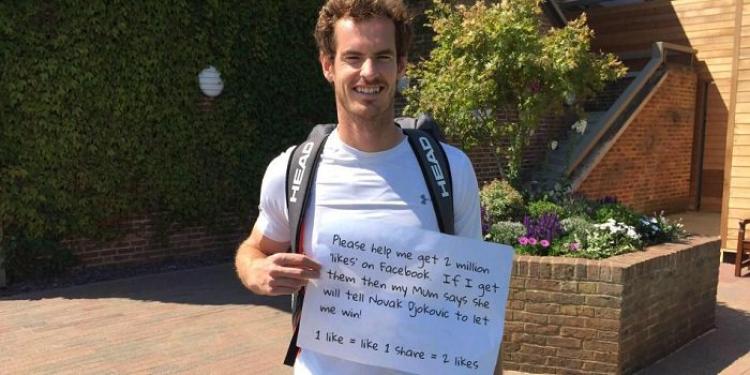An Inside Look at Gambling and Tennis
Posted: August 2, 2015
Updated: October 6, 2017

As obvious as boxing, gambling and tennis tend to be ignored by the public.
Watching a typical match at Wimbledon on television, several things can be noticed. Two players are on a clean court surrounded by white lines, separated by a single net with an exact height. Whether it’s a serve or a rally, every movement in tennis is measured and precise. Two players separated by oceans of legality cannot even consort with their coaches during their match play. Gambling and Tennis may not come to mind.
● Players often drop sets or lose sets to their opponents to rest or reserve energy
● Travel costs can cost a tour player as much as USD 100,000 yearly
● Players ranked lower than 10 rarely earn more than USD 1 million yearly
A different perspective may reveal more. Most of the players that you watch on television are top players who make decent livings. There are far more players who are unknown to gambling news. These players struggle on their own. Unable to afford coaches and assistance, these players carry their own bags all over. These players, who spend their best years looking for any opportunity to free them from their condition, might be the most prone to help fix a match.
The likely arrangement of gambling and tennis
When people start putting millions of dollars on a sporting event through an online sportsbook, officials normally take notice. Such an even happened in 2007 in a match involving Martin Arguello and Nikoly Davydenko in Poland. Although the betting volume would be 10 times higher than average, the English sportsbook Betfair, accepted the bets from 11 people, 9 of which were from Russia. The 87th ranked Arguello dropped the first set, but ended up winning when 4th ranked Davydenko forfeited due to a fracture.

It was only under a pre-arranged agreement that Betfair contacted the Association of Tennis Professionals (ATP) of the suspicious betting patterns. As a result, they voided all bets placed on the match. A year-long investigation was made by the ATP which became the largest in the association’s history. Since there was a lack of evidence, the ATP had to clear both players of any charges.
Many critics, fans and gambling experts find difficulty in admitting the strong presence of gambling and tennis. The more one looks at tennis, the more obvious it’s potential for gambling revenue. Unknown to people, tennis is the third most gambled on sport in the world. In the men’s ATP and the Women’s Tennis Association (WTA), there are 126 tournaments yearly. Regulating all suspicious activity is difficult since there are so many matches that happen around the world at the same time.
In tennis, players often drop sets or lose sets to their opponents when they want to rest or build up their energy. Tennis is mathematically simple to players who know that the games they serve on tend to give them the best advantage. Tennis players may give up points if they don’t want to risk further fatigue and injury. Most people cling to the “idealized” memories of players who volley back and forth fighting for one point. The fact it doesn’t happen often, makes this struggle more special when it does occur.
In Europe, sportbooks give punters the opportunity to bet on matches, sets, games and individual points. Players can legitimately or illegitimately give up points without any notice because officials and spectators see it as normal practice. This “spot fixing” is even more dangerous, because it’s easier to conceal. In UK gambling news, a study revealed that over 20 matches that occur in the first round of professional matches are fixed yearly. Since somebody has to lose in the first round, why not control the result.
The money that tends to attract sports and gambling

Just like sports investigation bodies have found in football match fixing in Europe, tennis’ core problem lies in the players themselves. Brian Tuohy, a journalist who has covered gambling in sports extensively, said “if a player recognizes he or she is a good player, but can never be a ‘great’ one, traveling the world and playing for gamblers could easily make for a better life than attempting to be ranked in the top 10.”
In the world of tennis, few if any players earn more than USD 1 million in a year. Most of fans as well as endorsements tend to give their attention only to the top earners. Tennis, for most of its history, has always been rooted to the upper classes. Yet many tend to always forget how expensive tennis is to play. Although in Europe many people have to pay to take part in the sport, in the US, free tennis courts are available anywhere.
Apart from country club, tennis association and court rental costs, the world of professional tennis is a “quantum leap” in terms of fees. Travel costs can put a tour player back as far USD 100,000 yearly. A full-time coach can set a player back USD 50,000 yearly. “Since many tennis players who compete actually lose money due to travel expenses, fixing a match can be more profitable to a player than winning prize money at tournament,” says Tuohy.
With the bulk of the US gambling news going to players like Serena Williams, Novak Djokovic, Maria Sharapova and Roger Federer, few will ever notice tennis and gambling unless scandals are revealed. This is especially true since research from the “Forensic Sports Analytics”, a book that researched tennis match fixing, concluded that only 1 percent of all first-round matches in a two year time were likely fixed. This hasn’t really giving the Tennis Integrity Unity (TIU) enough pressure to create more transparency.












